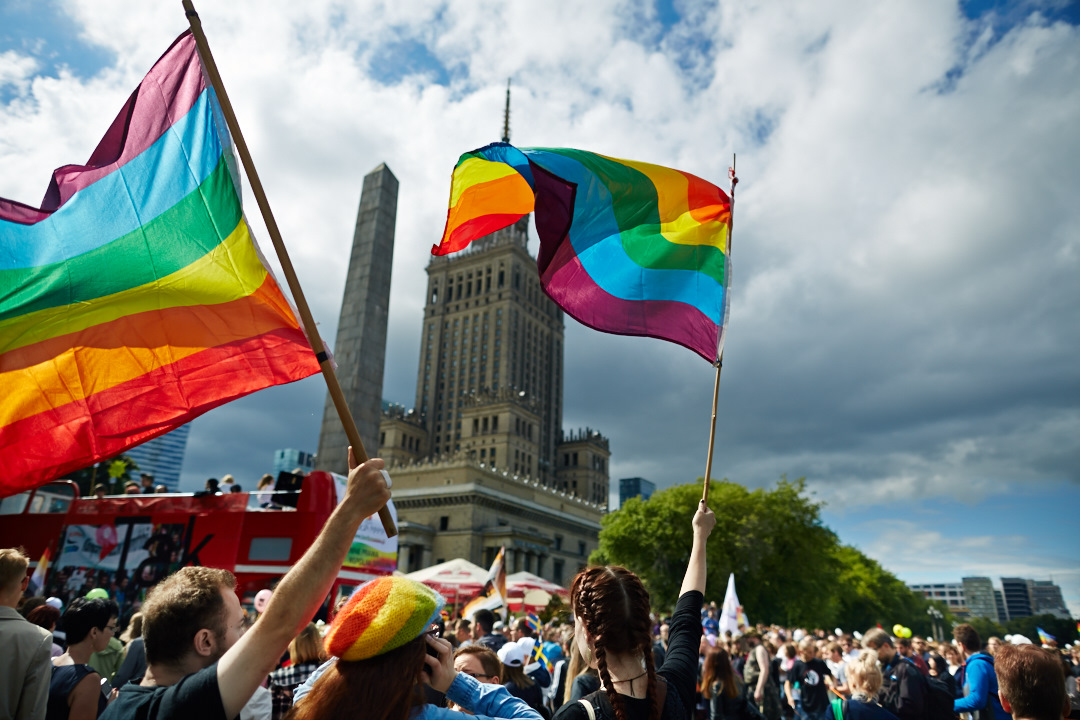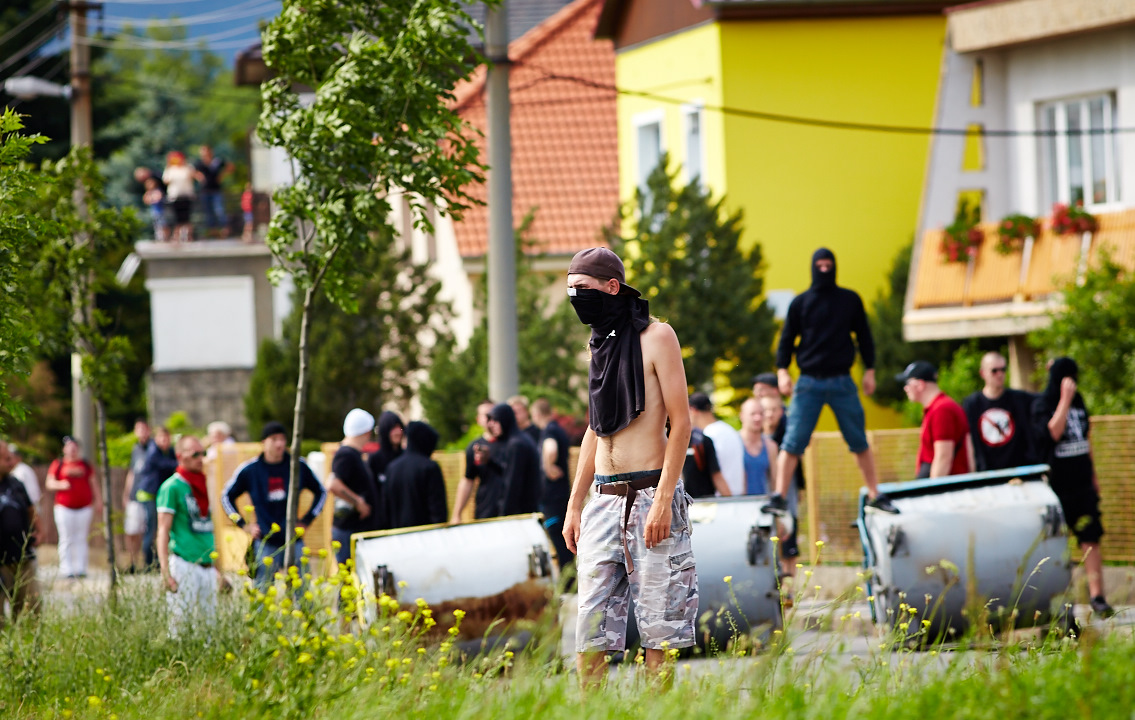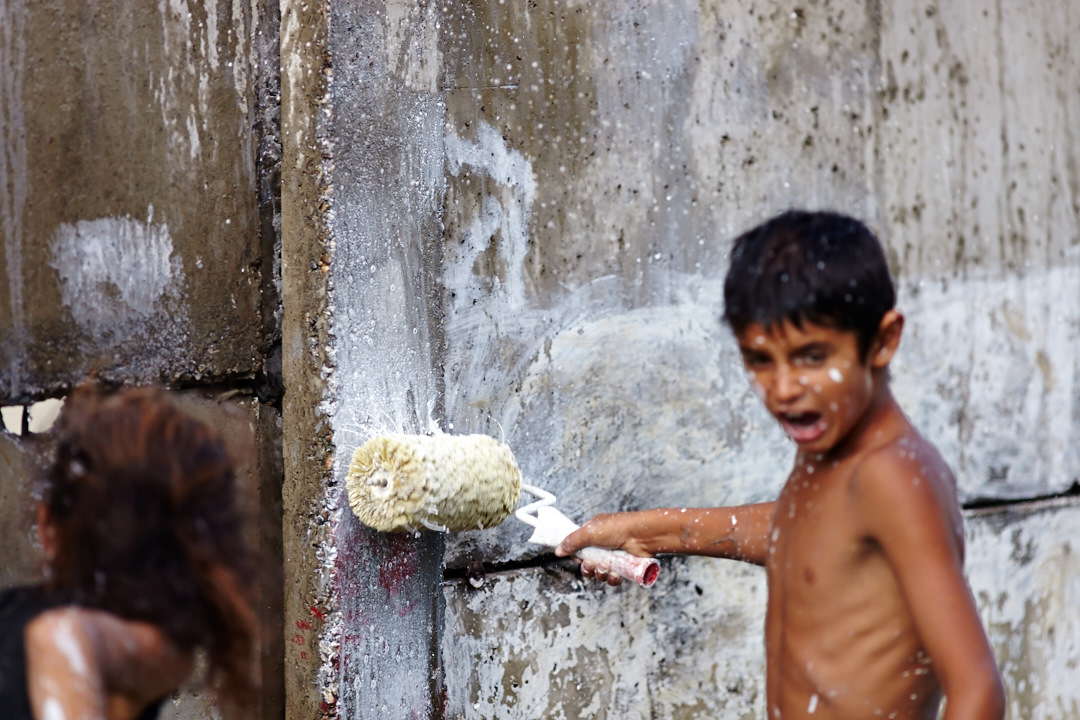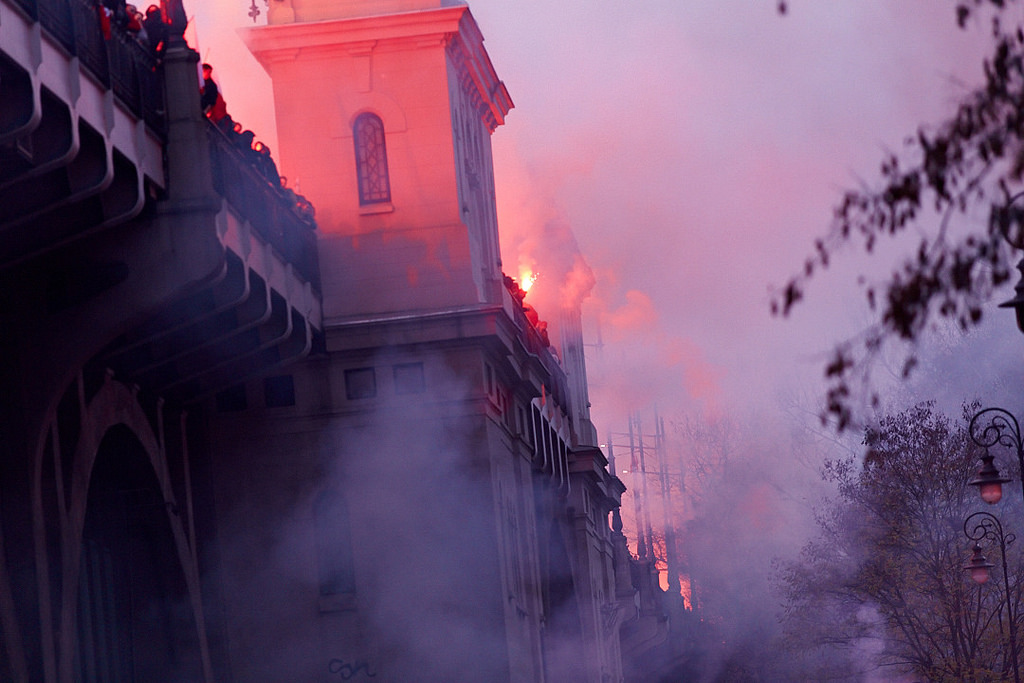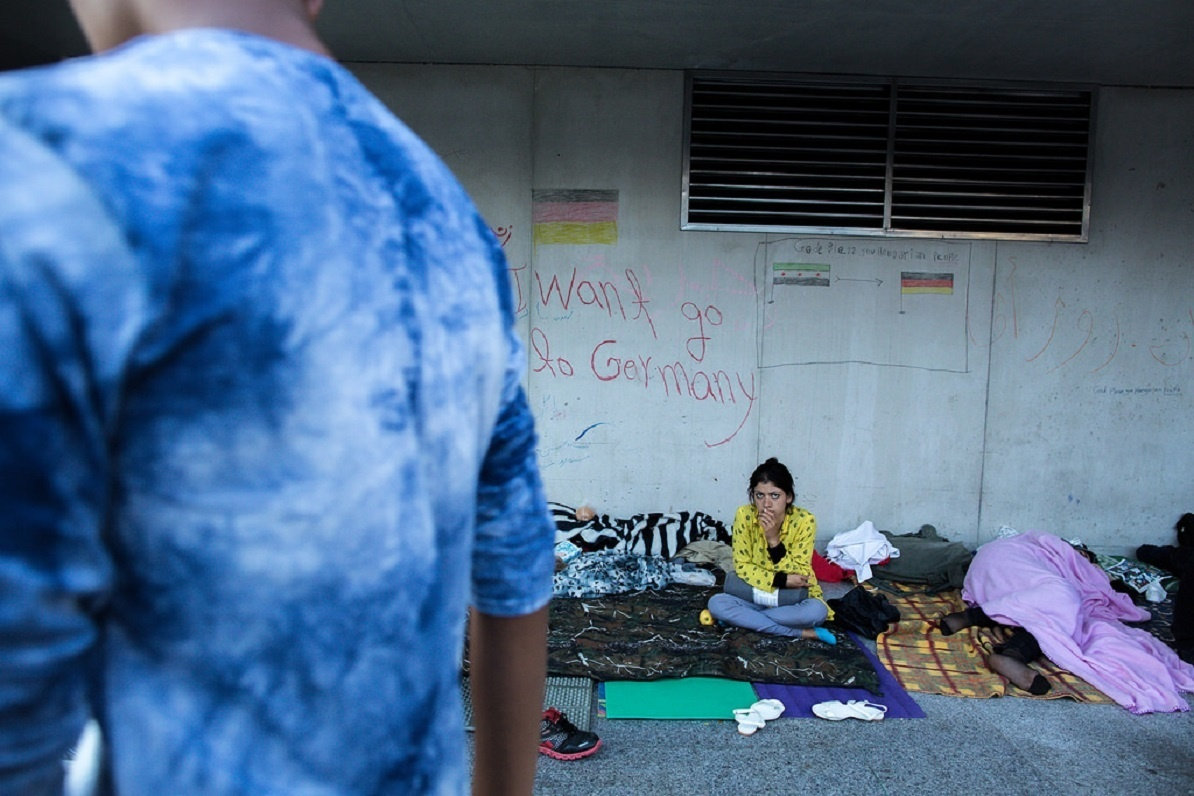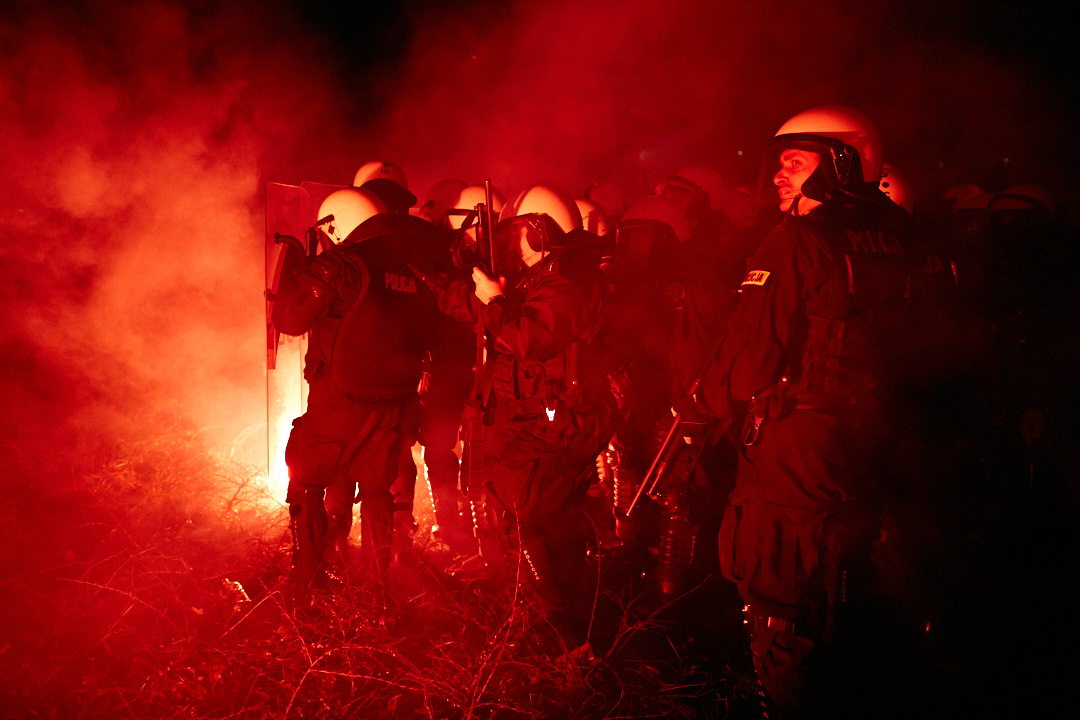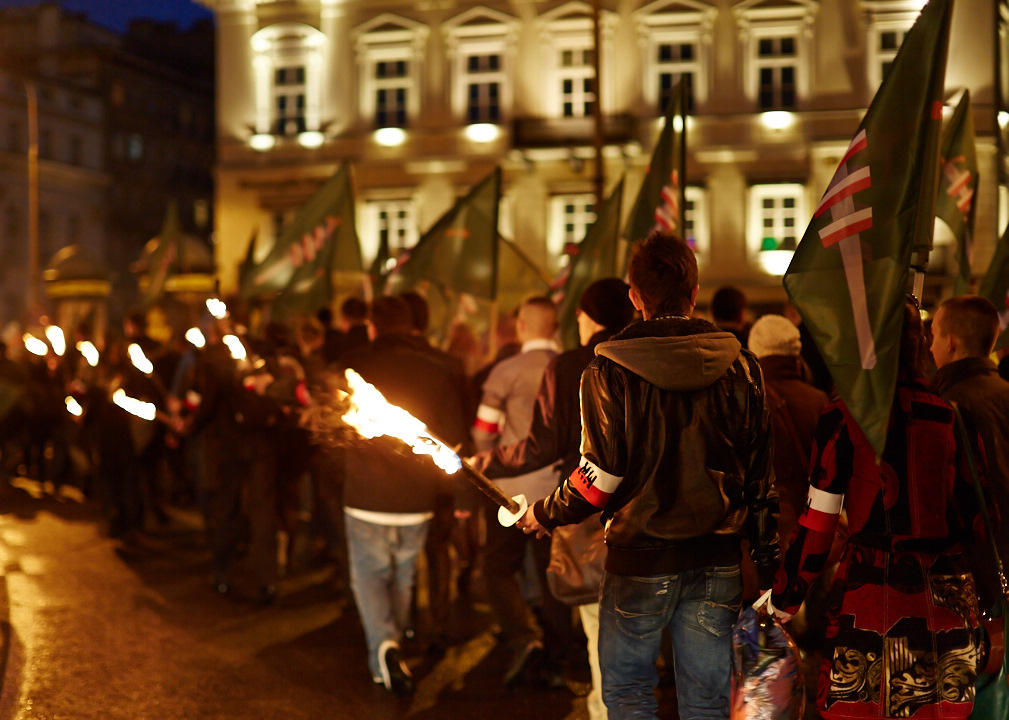Nothing is fictitious in Tomáš Rafa’s latest film, New Nationalism in the Heart of Europe (2015–2016). All of the footage is real and factual; the only falsehoods lie in political sentiment. The 52-minute-long digital video shows scenes of protests throughout the Balkans and Central Europe. Rafa captures far-right extremist groups in Slovenia, gypsy encampments in the Czech Republic, refugees attempting to cross from Serbia to Hungary, and skinheads marching in Warsaw.
Presented chronologically, the film juxtaposes scenes of Czech nationals chanting, “Nothing but the nation,” with images of young German protesters chanting, “Movement is everybody’s right.” Rafa has been exploring protests on different sides of party lines since 2009, when nationalist movements consumed his native Slovakia. He has traveled throughout the region, examining how these movements intersect with and respond to the refugee crisis, using documentary filmmaking to explore the line between patriotism and nationalism.
The film’s power is rooted in repetition. From footage of white men with shaved heads marching in the streets, to scenes of refugees carrying backpacks trying to move forward however they can, the film is steeped with the desire to push onward and have one’s voice heard. In every country, specific sites—railway stations, border walls, government plazas, and refugee camps—become places of protest. Some Czech citizens shout, “We are nationalists, not Nazis”; others yell, “Run home, Nazis.” For all of them, chanting propels the protest’s energy and momentum. In other hands, the repetition of chanting faces and clashes with police could become a giant, mute blur, but Rafa makes sure that singular moments are captured to render the specificity of each demonstration. For instance, one scene early in the film shows young toddlers happily running around, splattered with paint after an art-and-activism intervention in a Roma settlement in Slovakia. Later, nationalists at a rally attempt to tear apart the European Union flag with their hands and use a lighter to burn it. The women of a Muslim family form a circle to shield their young children from heckling by far-right extremists, and the police intervene. And a white Polish man states, “I want to be a racist,” to a crowd of supporters.
The work succeeds because of how deeply Rafa is embedded in each protest. Emerging from the legacy of Allan Sekula’s photo-essay, Waiting for Teargas (1999–2000), which documented the World Trade Organization protests in Seattle, Rafa’s film offers the viewpoint of a participant rather than a bystander. Though a viewer never sees Rafa, one can imagine him in the crowd or in the camp, moving alongside the people being filmed. Rather than standing on the sidelines, he’s taking part in the action with members of various political positions. While Rafa is vocal about his left-leaning politics and social activism, and viewers of the film recognize which side he is on, his documentation of each event uses the same approach. Thus viewers experience a fuller perspective of the movements and counter-movements and what each side is fighting for and against.
In this way, Rafa powerfully captures what can only be witnessed when one is embedded: the uncertainty of police officers, whose faces reveal their internal conflict as they follow instructions being shouted at them; close-ups of teenage faces looking up to the speakers who shout from platforms; confidential words spoken at the gravesite of a former authoritarian leader. Regardless of politics, Rafa captures intimate moments, lingering long enough to reveal complexities that shed light on the human condition. He answers no questions nor directly comments upon a scene; he participates so that viewers can witness them.
While the film is set in Europe, its subject’s relevance to the political climate in the United States makes the presentation at MoMA PS1 all the more important: it offers a contemporary look at the impact and meaning of protest that challenges us to examine truth even when we may wish it were fiction.
The exhibition Tomáš Rafa: New Nationalisms is on view at MoMA PS1 through September 10, 2017. To learn more about the project and view some of Rafa’s work, visit https://your-art.sk/.

